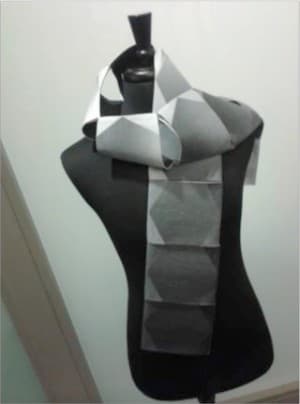Now Use A Smart Scarf, Thanks To SWARM Wearable Tech From Microsoft Research
Microsoft researchers are really on to something these days with their R&D department churning out some of the most amazing innovations ever since the start of 2015. We witnessed the Windows 10 upgrade and the Microsoft Hololens project that took the entire tech community by storm. Well now the news has it that at a conference on 'Tangible, Embedded, and Embodied Interaction' at Stanford University, the researchers from Microsoft presented SWARM (short for Sensing Whether Affect Requires Mediation), an affective wearable technology that can now be embedded into clothes, making a 'Smart Scarf' possible. A scarf is chosen as a symbol of a fashional embodiment to integrate the tech so that user's sensory capabilities and preferences can be studied.
As a prototype, the team has created the smart scarf to be commanded to heat up and vibrate via a smartphone app. The scarf is nothing but a flexible laser-cut garment made from hexagonal industrial felt material overlaid with conductive copper taffeta. The device is designed to respond to signals gathered from various sensors (via Bluetooth). Some of the modules can heat up, while others can vibrate. This kind of therapeutic technology may benefit those with mental or physical disabilities. People with vision or hearing impairments, for instance, may not receive important visual or verbal cues of others’ emotions.

Details about the smart scarf's hardware design, fabric design, overall reactions, cell design etc can be found in the Microsoft's official research paper #-Link-Snipped-# The project is still at a very early stage and it will be long before we can see it as a commercial product similar to the smartwatches. What are your thoughts on the recent advancement in wearable tech? Share with us in comments below.
Source: #-Link-Snipped-#
As a prototype, the team has created the smart scarf to be commanded to heat up and vibrate via a smartphone app. The scarf is nothing but a flexible laser-cut garment made from hexagonal industrial felt material overlaid with conductive copper taffeta. The device is designed to respond to signals gathered from various sensors (via Bluetooth). Some of the modules can heat up, while others can vibrate. This kind of therapeutic technology may benefit those with mental or physical disabilities. People with vision or hearing impairments, for instance, may not receive important visual or verbal cues of others’ emotions.

Source: #-Link-Snipped-#
0
